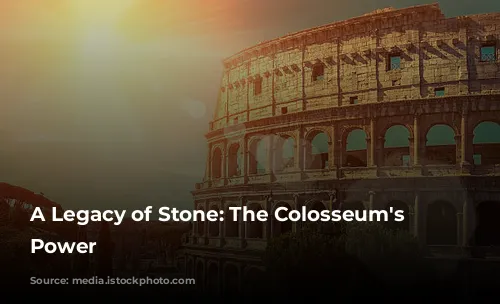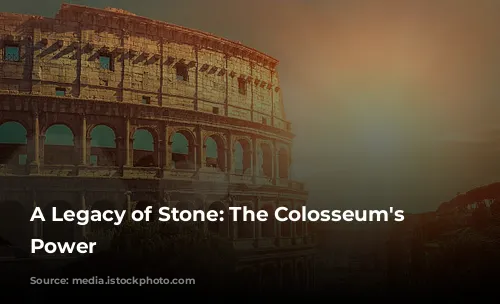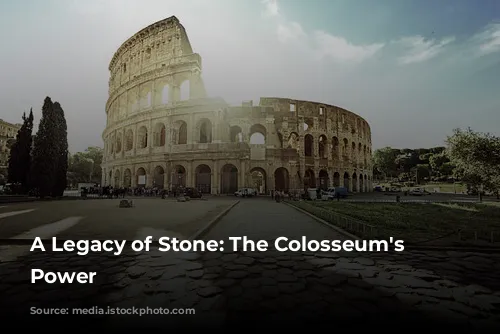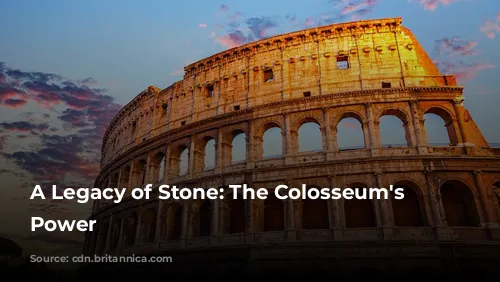The Colosseum: a name synonymous with ancient Rome and its awe-inspiring grandeur. This iconic structure, one of the few remaining largely intact monuments from the Roman Empire, stands as a testament to their architectural brilliance and engineering mastery. Its imposing presence also serves as a major tourist attraction, generating millions of dollars in revenue for the Italian government. In fact, the Colosseum, Roman Forum, and Palatine Hill collectively drew in over $63.3 million (€53.8 million) in 2018, placing them at the top of Italy’s most popular tourist destinations.
From Arena to Fortress: A Journey Through Time
The Colosseum’s story is one of dramatic transformations, mirroring the rise and fall of the Roman Empire. After the empire’s decline, the once-mighty arena fell into a state of disrepair. The 12th century saw the Frangipane and Annibaldi families repurpose the structure as a fortress, a stark contrast to its original purpose. The late 15th century witnessed a further degradation as Pope Alexander VI allowed the Colosseum to be used as a quarry, stripping away its architectural splendor. For over a thousand years, this architectural marvel lay neglected, its fate seemingly sealed. However, a glimmer of hope emerged in the 1990s with state-funded restoration efforts, breathing life back into the ancient giant.
A Symbol of Power and Entertainment
The Colosseum’s birth can be traced back to the tumultuous year of the Four Emperors in 69 CE. Emperor Vespasian, seeking to reestablish stability and revitalize Rome after a period of turmoil, envisioned the Colosseum as a grand entertainment venue. As was customary in Roman society, the amphitheater was designed to host a variety of spectacles, including gladiator fights, animal hunts, and even mock naval battles. The Colosseum, therefore, represented more than just a building; it symbolized imperial power and the desire to captivate the Roman populace.
From Foundation to Completion: A Monumental Task
Construction of the Colosseum began under the reign of Vespasian between 70 and 72 CE. His son and successor, Titus, officially dedicated the completed structure in 80 CE, a grand occasion marked by 100 days of games. Domitian, Titus’s brother, completed the final touch by adding the fourth story in 82 CE. The construction of this architectural masterpiece was funded by the spoils of war, specifically from the sack of Jerusalem in 70 CE, and tragically, it was built by enslaved Jews from Judea.
An Architectural Marvel: Engineering Genius at its Peak
The Colosseum, also known as the Flavian Amphitheater, is an elliptical structure built with stone, concrete, and tuff, towering four stories high. Its impressive dimensions, measuring 620 by 513 feet (189 by 156 meters), allowed it to accommodate a staggering 50,000 spectators. This marvel of engineering was renowned for its role in gladiatorial combat, a spectacle that captivated the Roman world.
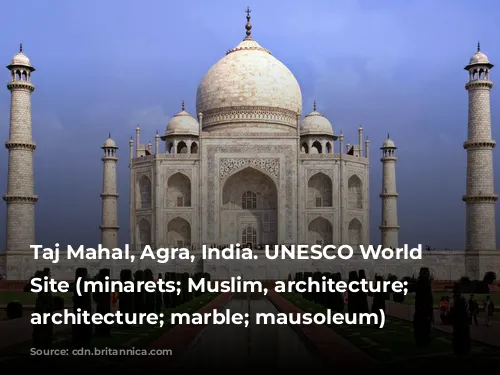
A Grand Spectacle: The Colosseum’s Public Arena
The Colosseum’s location, east of the Palatine Hill on the grounds of Nero’s Golden House, holds symbolic significance. The artificial lake, a centerpiece of the former palace, was drained and replaced by the public amphitheater, a deliberate choice by Vespasian. This change symbolized the shift from a tyrannical ruler’s private indulgence to a grand public space that could host tens of thousands of Romans.

Construction and Design: A Symphony of Stone and Skill
Unlike earlier amphitheaters, which relied on the support of hillsides, the Colosseum stands as a freestanding structure, showcasing the innovative use of stone and concrete. The intricate network of barrel vaults and groin vaults adds to its structural integrity. Three tiers of arcades encircle the arena, adorned with engaged columns in the Doric, Ionic, and Corinthian orders. This rising arrangement of columns inspired the Renaissance codification known as the assemblage of orders, a testament to the Colosseum’s influence on architectural theory.
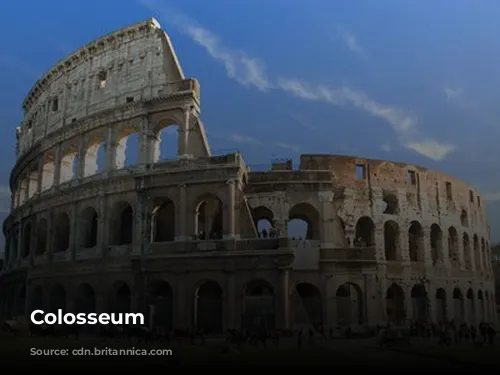
A Grand Stage: The Colosseum’s Spectators and Spectacles
The Colosseum’s velarium, a massive retractable awning, protected spectators from the sun. This elaborate system, supported by masts extending from the top story, required the expertise of hundreds of Roman sailors to manipulate the rigging. The amphitheater was witness to countless gladiator fights, animal hunts, and even mock naval engagements, solidifying its reputation as a grand stage for Roman entertainment. The Colosseum, however, remains shrouded in some mystery, as the exact details of its role in the martyrdom of early Christians remain uncertain.
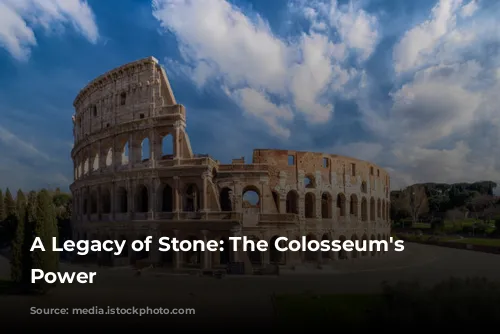
From Glory to Neglect: The Colosseum’s Changing Roles
The Colosseum’s story doesn’t end with its days of gladiatorial combat. In medieval times, the once-grand arena saw its role shift to that of a church, later becoming a fortress for powerful Roman families. Despite its past glory, the Colosseum suffered from lightning strikes, earthquakes, and the ravages of vandalism and pollution. Its marble seats and decorative elements were plundered, and the once-majestic structure was reduced to a quarry for over a thousand years.
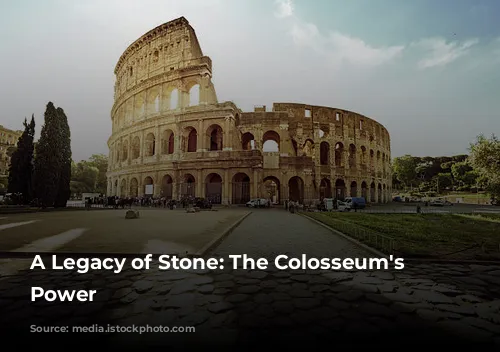
Rebirth of a Legend: Preservation and Restoration
The Colosseum’s fate took a turn for the better in the 19th century with the start of preservation efforts, spearheaded by Pius VIII. The 1990s saw the launch of a major restoration project, bringing the structure back from the brink of ruin. Today, the Colosseum stands as one of Rome’s most cherished tourist attractions, welcoming millions of visitors each year. Changing exhibitions showcasing the rich tapestry of ancient Roman culture are regularly held, ensuring the Colosseum’s enduring relevance.
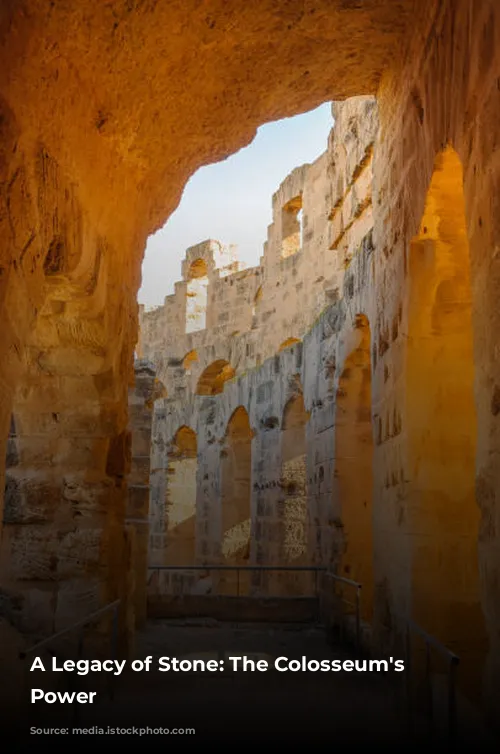
Conclusion: A Timeless Legacy
The Colosseum’s journey, from its glory days as a symbol of Roman power to its long years of neglect and its eventual rebirth, speaks volumes about the cyclical nature of history. As a monument to ancient Rome’s architectural brilliance and engineering prowess, the Colosseum continues to capture the imagination and awe of the world. Its enduring legacy, a testament to the human spirit’s capacity to create and recreate, ensures that the Colosseum will continue to stand tall for generations to come.
